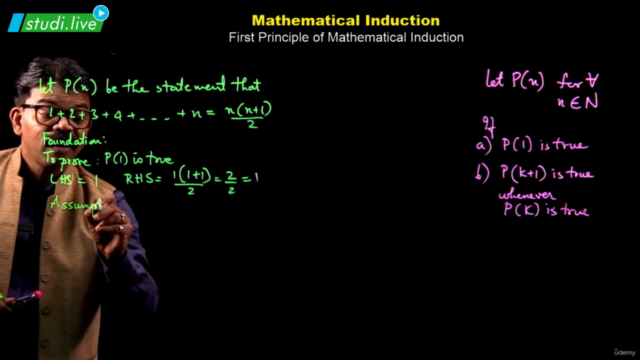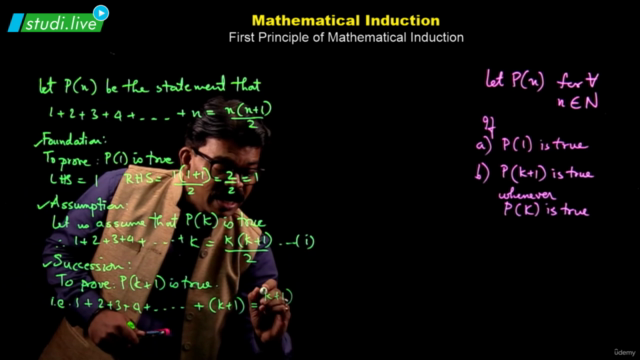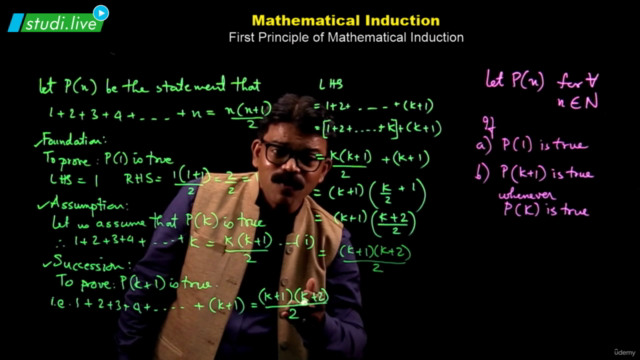Discrete Maths - Mathematical Induction & Binomial Theorem

Why take this course?
🎉 Discrete Mathematics - Mastering Mathematical Induction & Binomial Theorem for Competitive Exams 🎉
Headline: Unlock Your Potential with Our Live Course for IIT-JEE Main & Advanced, BITSAT, SAT, MSAT, MCAT, State Board, CBSE, ICSE, and IGCSE. Dive deep into the world of Discrete Mathematics with a focus on Mathematical Induction and the Binomial Theorem!
Course Overview:
**🌟 Principle of Mathematical Induction 🌟
Mathematical induction is a powerful technique in discrete mathematics used to prove propositions that are true for an infinite number of cases. It's a method of mathematical proof where you prove two things: first, that the statement holds for the starting case (usually n=1), and second, that if the statement holds for some arbitrary case n=k, then it also holds for the subsequent case n=k+1.
- Process of Proof by Induction 🔍: We begin by taking a set of natural numbers and proving that a certain statement P(n) is true for all elements within this set. The process involves two steps:
- Base Case Verification (P(1)): Establishing that the statement holds for the smallest element in our set, typically n = 1.
- Inductive Step: Assuming the statement holds for an arbitrary natural number k, we then prove it also holds for k+1, thus establishing the statement for all natural numbers greater than or equal to the starting point.
**🔠 Binomial Theorem 🔠
The Binomial Theorem is a cornerstone of combinatorics and algebra that provides the coefficients in the binomial expansion of (a + b)^n, where n is a non-negative integer.
- Historical Insights: The theorem has a rich history, with its origins tracing back to the work of mathematicians like Pascal and Newton.
- Statement & Proof: We'll explore the statement of the Binomial Theorem for positive integral indices and its rigorous proof.
- Pascal's Triangle: Understanding Pascal's triangle is key to visualizing the coefficients in the binomial expansion. This triangular array of numbers has a simple pattern and can be used for quick calculations.
- General & Middle Terms: We'll delve into how to find the general term and the nth term in the binomial expansion, along with the special case of the middle terms.
- Simple Applications: By applying the Binomial Theorem, we can simplify complex expressions and solve problems related to combinations and permutations.
**🎓 Summary 🎓
Mathematical Induction:
- Inductive Reasoning: A method of proof that starts with a base case and assumes the statement holds for an arbitrary case, then proves it for the next case, iteratively covering all cases.
- Proof Technique: A formal proof technique used to establish statements across a range of values without exception.
- Flexible Properties: The principle can be adapted to different scenarios, starting from the smallest case that satisfies the condition and working upwards.
- (ii) Conditional Property: This aspect of induction is particularly useful when dealing with hypothetical situations where a statement's validity for n=k is contingent on it being true for n=k+1.
Binomial Theorem:
- Pascal’s Triangle: A visual representation that aids in understanding the pattern of coefficients in binomial expansions.
- Binomial Coefficients (nCr): These are the numerical values obtained from the expansion and have important applications in probability and statistics.
- Expansion Structure: The expansion contains (n+1) terms, with each term's index for 'a' decreasing by one as we move from one term to the next, while the index for 'b' increases accordingly.
- Index Summation: Every term in the expansion has a sum of indices equal to n, providing a clear link between the coefficients and the powers of 'a' and 'b'.
Join our live course to master these concepts and enhance your problem-solving skills for various competitive examinations! 🎓✨
Course Gallery




Loading charts...